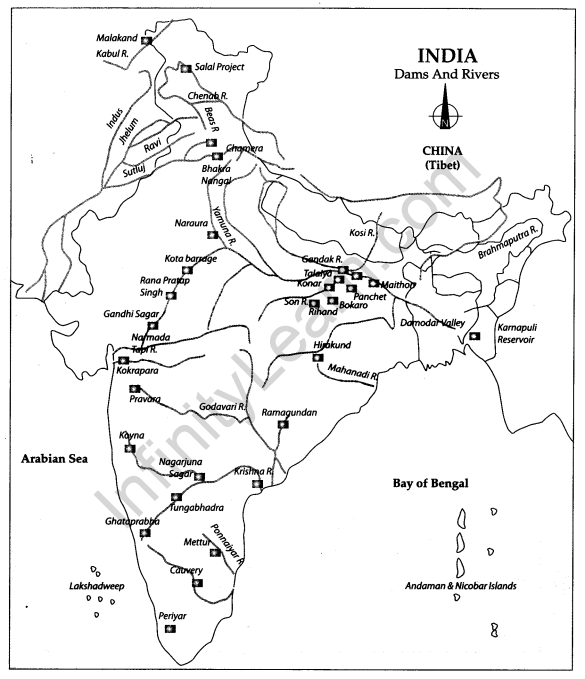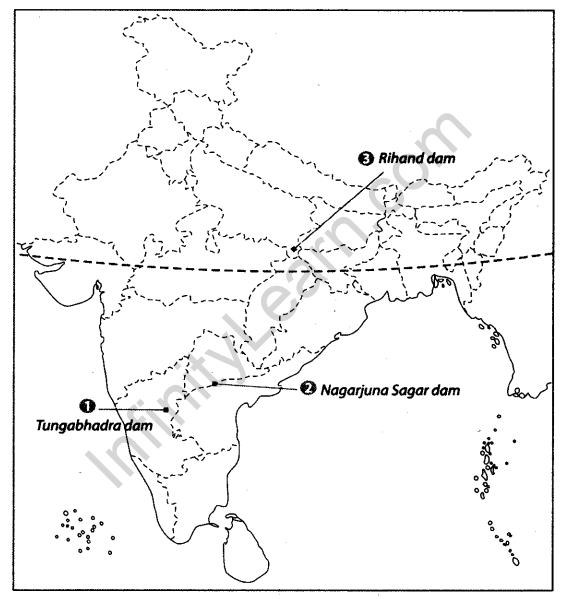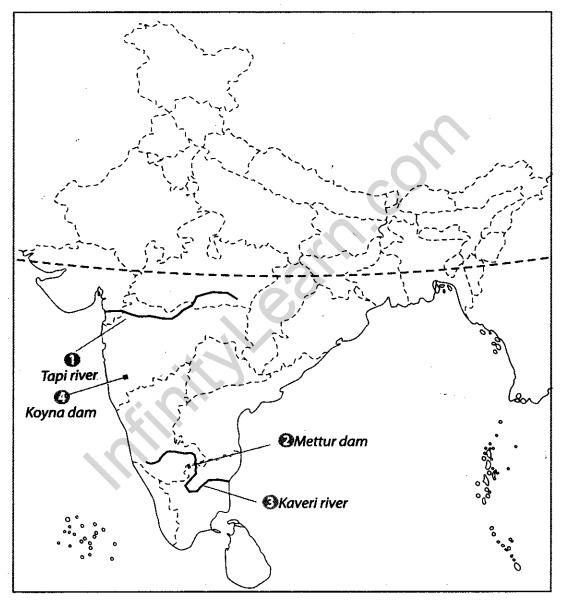Table of Contents
Class 10 Geography Chapter 3 Map Work
In Class 10 Geography, Chapter 3 focuses on water resources, which are essential for life and development. This chapter helps students understand various aspects of water resources through engaging map work. Students will explore the water resources map class 10, which includes important features like rivers, lakes, and reservoirs. The water resources map work is designed to enhance their understanding of how these resources are distributed across different regions. As part of the water resources class 10 geography social science maps, learners will analyze class 10 dams map to see where significant water projects are located. This water resources class 10 map work encourages students to practice their skills in interpreting maps, making it an important aspect of their studies. By completing the water resources map practice class 10 CBSE, students will gain valuable insights into the role of water in geography and its impact on society. Overall, the map work class 10 geography helps to connect theoretical knowledge with practical applications, preparing students for real-world challenges related to water management.
CBSE class 10 Geography map work chapter 3 Water Resources is part of Social Science Class 10 Map Pointing.
Here we have given NCERT Class 10 Geography Map Work Chapter 3 Water Resources.
| Board | CBSE |
| Textbook | NCERT |
| Class | Class 10 |
| Subject | Social Science Geography |
| Chapter | Chapter 3 |
| Chapter Name | Water Resources |
| Number of Questions Solved | 3 |
| Category | Map Work Skills |
Class 10 Geography Map Work Chapter 3 Water Resources
India: Major Dams and Rivers of India Map
This map shows the major dams and rivers of India. A dam is a structure, designed to hold back water in a lake, river, stream or other water bodies.

Question 1. Locate and label the following items on the given map with appropriate symbols.
- Tehri dam [CBSE 2012, 11, 10]
- Bhakra Nangal Dam
- Rana Pratap Sagar dam [CBSE 2012, 11, 10]
- Salal dam [CBSE 2012, 11]

Answer:

Question 2: Features are marked by numbers in the given outline map of India. Identify these features with the help of the following information and write their correct on the lines marked in the map.
- A dam constructed across the Tungabhadra river [CBSE 2012, 11, 10]
- Adam [CBSE 2016, 11, 10]
- A concrete gravity dam

Answer:

Question 3: Locate and label the following items on the given map with appropriate symbols.
- Tapi river
- Mettur dam
- Kaveri river
- Koyna Dam

Answer

Importance of Class 10 Geography Chapter 3 Map Work
The importance of Class 10 Geography Chapter 3 map work lies in its ability to provide students with a practical understanding of water resources and their significance. Here are some key reasons why this map work is essential:
- Visual Learning: Maps offer a visual representation of information, helping students grasp complex concepts easily. By studying the water resources map class 10, students can better understand the distribution and accessibility of water sources.
- Analytical Skills: Engaging in water resources map work enhances analytical thinking. Students learn to interpret various map features, identify patterns, and draw conclusions about how geography affects water availability.
- Real-World Relevance: Understanding water resources is crucial for addressing environmental challenges. The class 10 dams map highlights the role of human-made structures in managing water, helping students connect theoretical knowledge to real-world applications.
- Interconnectedness: The water resources class 10 geography social science maps illustrate how different regions depend on water for agriculture, industry, and daily life. This fosters a sense of awareness about global water issues and promotes responsible resource management.
- Preparation for Exams: Mastering map work class 10 geography is vital for success in assessments. Practicing with the water resources map practice class 10 CBSE equips students with the skills needed for map-related questions in their exams.
In summary, the map work in Chapter 3 of Class 10 Geography is a valuable tool that enhances learning, develops critical skills, and prepares students for future challenges related to water resources.
FAQs on Water Resources Map Practice Class 10 CBSE
How can I improve my map work skills for the Water Resources chapter?
To improve your map work skills, regularly practice identifying key features on water resources maps, such as major rivers and dams. Use sample questions and previous years’ exam papers to familiarize yourself with the types of map-related questions that may appear in your exams.
Why is map practice important for understanding water resources in Class 10?
Map practice is important because it helps students visualize and analyze the distribution of water resources. It enhances their understanding of how geography affects water availability and management, which is crucial for environmental studies and real-world applications.
What is included in the Water Resources map practice for Class 10 CBSE?
The Water Resources map practice for Class 10 CBSE includes various maps showing rivers, lakes, reservoirs, and dams. It helps students understand the distribution and significance of water resources in India and other regions.







